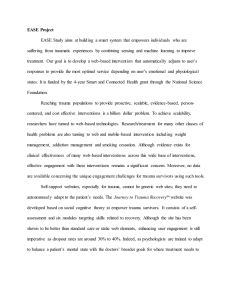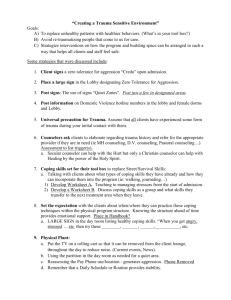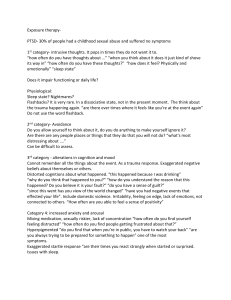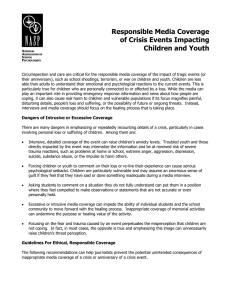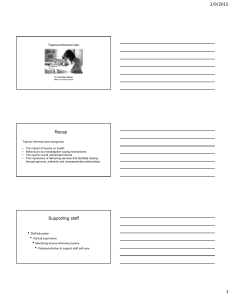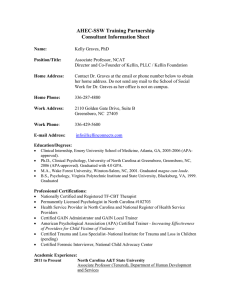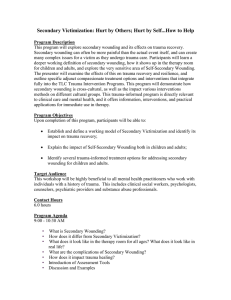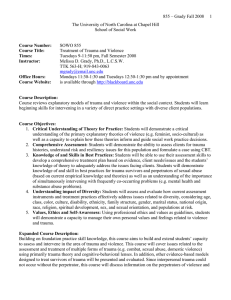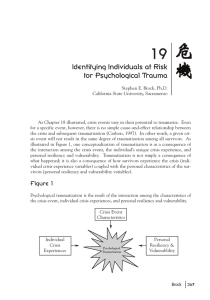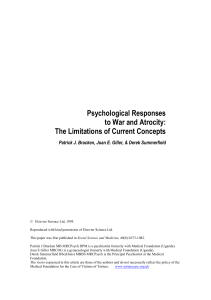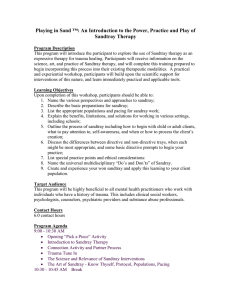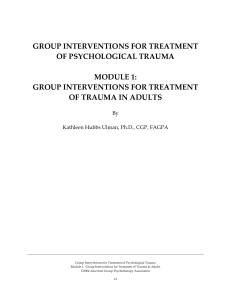South Carolina Floods: Promoting Resilience and Recovery South Carolina Association of School
advertisement
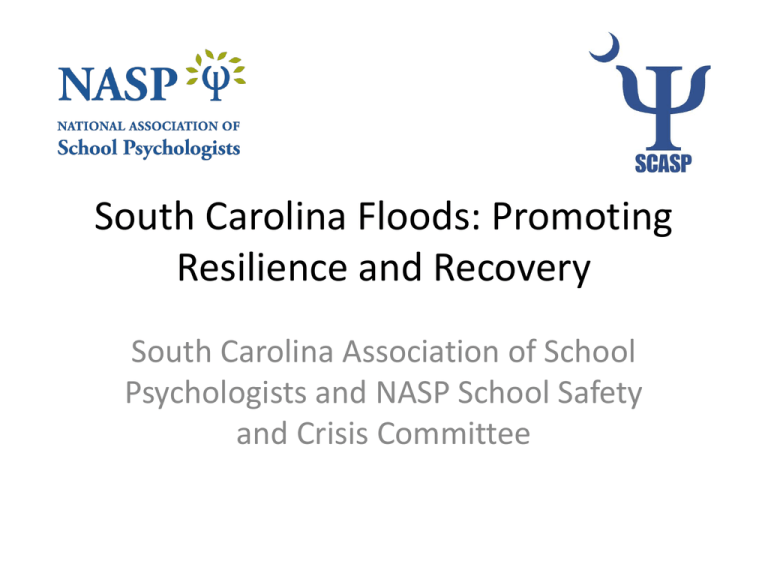
South Carolina Floods: Promoting Resilience and Recovery South Carolina Association of School Psychologists and NASP School Safety and Crisis Committee Crisis Defined • Brock and DiRaddo (2012) outline • Crisis is “extremely negative, uncontrollable, or unpredictable” • Occurs suddenly, unexpectedly, and without warning • Generates feelings of helplessness, powerlessness, and entrapment "Is It A Crisis?", 2012, Principal Leadership PREPaRE Model Emphasis • • • • • • Physical proximity to incident Emotional proximity Internal vulnerabilities External vulnerabilities Threat perceptions Importance of healthy support systems PREPaRE Workshop 2 ( 2011) Determining How to Intervene • All school crisis teams in affected areas need – Critical information about impact on homes, schools, roads, etc. – Are schools accessible, and functioning? – Knowledge about available resources for community • Non-profit and government agencies • What and when assistance is available • Application processes, if any Returning to Routines Requires Planning Challenges for all facets of school infrastructure, from transportation to teaching Challenges for employees in getting to work If impacted personally, importance of time to make calls and get assistance Locating students who have not returned Balancing academic demands with highly impactful event Crisis Incidents Affect People Differently: Assessment Needed How do people (adults and children) typically cope? How supportive is the community? Interventions may be needed universally to ensure that all have access to critical information School teams need community partners to ensure that larger issues (e.g. community safety) are addressed Levels of School Crisis interventions See Handout 12 Tier 3 Indicated Psychotherapy Tier 2 Selected Psycho-educational Groups Immediate Crisis Intervention Tier 1 Universal Prevent Psychological Trauma Reaffirm Physical Health Ensure Perceptions of Security & Safety Evaluate Psychological Trauma Re-establish Social Support Systems Caregiver Trainings Workshop Objective: Participants will be able to match psychological trauma risk to a range of appropriate crisis interventions. 7 Practical Methods of Outreach • Sharing Handouts-NASP and SCASP • Information Sessions for Staff, Parents, Administrators, Mental Health Professionals, Volunteers • Peer Support • NASP Community for South Carolina • www.scaspweb.org School Safety and Mental Health Page and Social Media Helping Teachers Know What to Say • Maintain typical routine • Create an environment for kids to share (e.g., Class Meeting, individual talks for those who prefer privacy) • In a group of children with mixed experiences, if traumatic experiences are shared, contain the level of detail and refer to a more private time to talk and utilize referral system for more help • Adjust deadlines and expectations of workload • If you see a change in behavior, make sure a follow-up from a helping professional happens EVERY TIME • Model and teach appropriate adaptive coping for kids (e.g., destress techniques, positive self-talk, seeking help when you need to talk) • Answer student questions honestly and at a developmentally appropriate level Referrals for Trauma Needs • What do you have available in your Community? – Mental health providers – School-based counseling services – Future trauma training – PREPaRE Trainers in SC for consultation and guidance Disaster Response Phases Myers and Zunin, 1990; DHHS, 2000 & 2004; Herrmann, 2004 Importance of Self-Care • School mental health providers, educators, parents, and others can easily become overwhelmed by a crisis incident • Advocate for self-care mechanisms • Model appropriate coping by: – Taking needed breaks – Reaching out to others for support – Taking care of physical and mental well being – Taking steps toward personal recovery Resiliency • Each person has coping skills to leverage their adjustment Together, we will get through this


